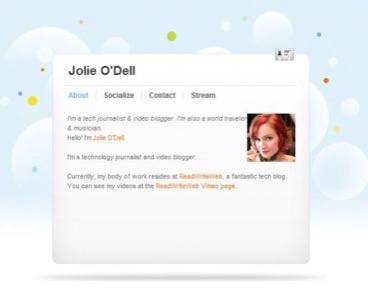We’ve all seen a great deal lately of two trends: Personal website creation made simple (here’s our favorite four resources of the moment) and social media aggregation services that pool all a user’s streams and networking information.

Today, TinyChat creator Dan Blake along with cohorts Oliver Turbis and Joshua Gigg have announced the launch of a new freemium-model service that combines good-looking personal sites with users’ existing social media data, and all in a mercifully lightweight format that’s as easy to digest as it is quick to set up. Although the service, called Card.ly, is reminiscent of Retaggr or Chi.mp, it humbles the competition by delivering a simpler, more focused result. Blake et al. apparently understand the old adage, “Less is more.”
The team took about three weeks and spent $500 to create Card.ly, according to an email from Turbis this evening. The monetization strategy is simple enough: Free users are given an array of incentives to upgrade to reasonably priced premium accounts. For $24.99 a year, users have access to more/better “skins” or page themes, analytics and SEO features, and an unlimited number of networks and RSS feeds in each profile.
The Card.ly team is also appealing to designers/developers by asking for skin submissions; each skin can then become a source of revenue for the designers as users select and purchase their skins.
Creating this “card,” in reality a four-page microsite, took about ten minutes:

The pages are small and simple, and the range of free skins is appealing:



Turbis told us soon, users will be able to create their own skins for their pages from the ground up without having to submit them to the community. Also coming soon is an embeddable widget:

As far as startups go, this team definitely kept it small and simple – a lesson other companies should learn well. We hope they’re able to see great results for this effort.










